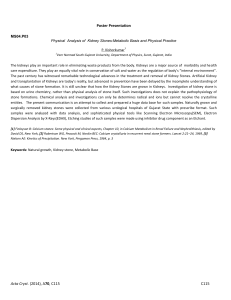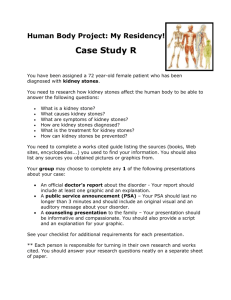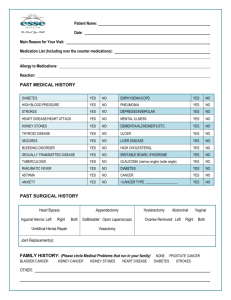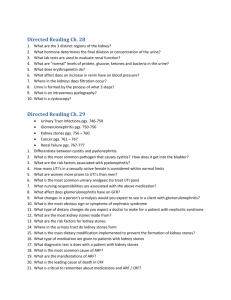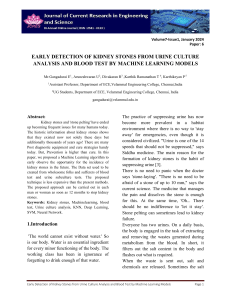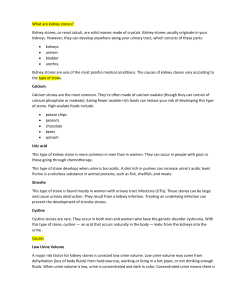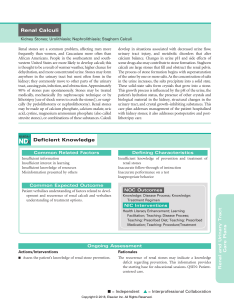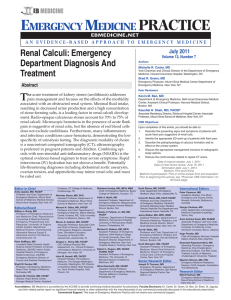Kidney stones
advertisement
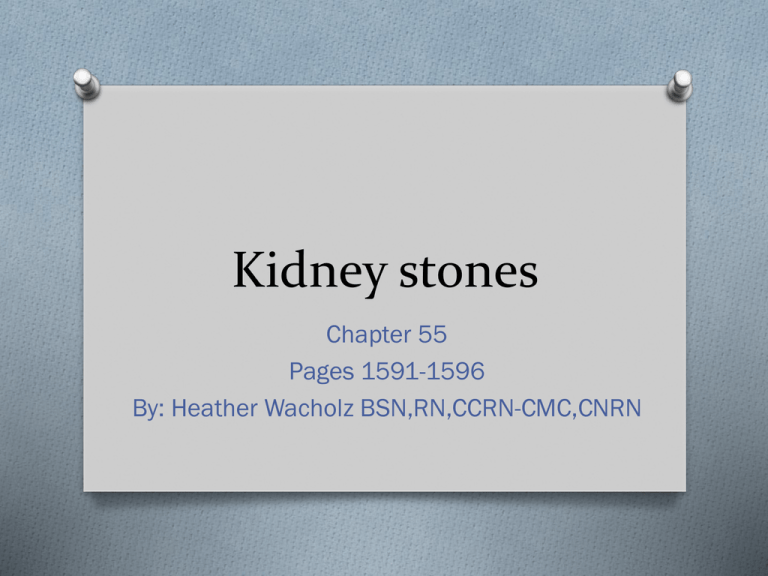
Kidney stones Chapter 55 Pages 1591-1596 By: Heather Wacholz BSN,RN,CCRN-CMC,CNRN Normal Kidney Function Kidney Stones O Kidney stones (renal Urolithiasis or nephrolithiasis) are small, hard mineral deposits that form inside your kidneys. The stones are made of mineral and acid salts. O Kidney stones have many causes and can affect any part of your urinary tract — from your kidneys to your bladder. Often, stones form when the urine becomes concentrated, allowing minerals to crystallize and stick together. O Passing kidney stones can be quite painful, but the stones usually cause no permanent damage. Depending on your situation, you may need nothing more than to take pain medication and drink lots of water to pass a kidney stone. In other instances — for example, if stones become lodged in the urinary tract or cause complications — surgery may be needed Picture of Kidney Stone More Pictures Kidney Stone O 50% of patients with a single renal stone will develop another within five years O Stones are usually formed in the urinary tract O Concentrations of substances such as calcium oxalate, calcium phosphate, and uric acid increase O Stones may be found in the kidney, ureters, and/or bladder Pathophysiology O Stone formation is not clearly understood O One theory is there is a deficiency of O O O O substances that normally prevent crystallization in the urine For example, citrate, Mg., Nephrocalcin, and Uropontin Dehydration Immobility infection Pathophysiology Continued O Cancer O Excessive Vitamin D O Excess milk and alkali O Polycythemia Vera O Hyperparathyroidism O Renal tubular acidosis Types of Stones O Calcium O Uric Acid O Cystine O Oxalate Clinical Manifestations O Infection (Bladder) O Pain O Hematuria O Pain over the costovertebral area O Nausea and Vomiting O Stone in the ureter cause colicky pain Diagnostics O KUB O Ultrasonography O IV urography O Retrograde Pyelography O Blood Chemistries O 24 Hour urine X-ray of a Kidney Stone Medical Management O Eradicate the Stone O Prevent nephron destruction O Control infection O Relive obstruction that may be present O Opioid analgesic O NSAIDS O Hot Baths O Moist heat O Increase PO intake (2 L/day) Surgical Management O Surgery 1-2% of patients O Nephrolithotomy O Nephrectomy O Ureteroscopy Ureteroscopy Nursing Care Plan O Acute Pain O Deficient knowledge O Infection/Urosepsis O Major goals include relief of pain and prevention of reoccurrence O Absence of complications
